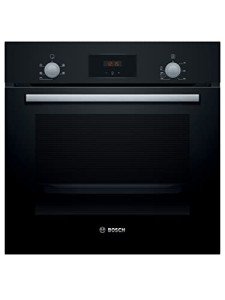Understanding Built-In Cookers: A Comprehensive Guide
Built-in cookers are progressively ending up being a staple in modern-day kitchens, providing benefit, functionality, and sleek design. integrated ovens and hobs integrated kitchen appliances mix flawlessly with kitchen cabinetry, supplying a streamlined look while taking full advantage of space effectiveness. In this post, we will explore the different kinds of built-in cookers, their benefits, features, and setup factors to consider.
What Are Built-In Cookers?
Built-in cookers are kitchen appliances that are set up straight into the cabinets of a kitchen instead of being freestanding. They can be incorporated as either an oven or a hob, and they are available in numerous kinds to meet the varied requirements of home cooks and expert chefs alike.
Types of Built-In Cookers
Built-in cookers normally fall into two primary categories: built-in ovens and built-in hobs. Below is a breakdown of each type:
| Type | Description |
|---|---|
| Built-In Ovens | These are normally housed within a cabinet and can be electric or gas designs. They can be found in various setups, including single, double, and microwave-convection combinations. |
| Built-In Hobs | These are cooking surface areas designed for combination within a counter top. They can be gas, electric, or induction models, including multiple cooking zones. |
Advantages of Built-In Cookers
Built-in cookers provide several advantages that make them a popular choice for contemporary households and professional kitchen areas alike. Some essential advantages include:
- Space Efficiency: Built-in cookers maximize kitchen space by allowing for more streamlined layouts and the ability to set up other cabinetry around them.
- Aesthetic Appeal: They offer a streamlined, integrated look that can enhance the general aesthetic appeals of the kitchen.
- Improved Functionality: Many built-in cookers included advanced cooking features, consisting of self-cleaning options, convection settings, and wise innovation.
- Personalization Options: They enable property owners to create a cohesive kitchen style customized to their requirements.
Features of Built-In Cookers
When considering built-in cookers, there are several functions to take into consideration. Here are some popular options:
- Convection Cooking: Many built-in ovens feature convection cooking, which uses a fan to circulate hot air, making sure even cooking.
- Self-Cleaning Options: This feature saves effort and time in keeping the oven's cleanliness by making use of heats to burn food residues.
- Smart Technology: Some modern-day models feature Bluetooth or Wi-Fi connectivity, enabling users to manage their appliances remotely through mobile apps.
- Several Cooking Zones: For built-in hobs, various cooking zones enable users to prepare numerous dishes concurrently.
Factors to consider for Installation
While built-in cookers have many advantages, proper installation is critical to optimizing their performance and guaranteeing security. Here are a few indicate think about:
- Kitchen Layout: Ensure that the cooker fits well with the general kitchen design, consisting of kitchen cabinetry and countertops.
- Electrical and Gas Requirements: Check compatibility with your home's electrical or gas supply. Consulting an expert is a good idea to make sure safe setup.
- Ventilation Needs: For gas cookers or particular types of built-in hobs, adequate ventilation is important to avoid the buildup of harmful gases.
- Height and Accessibility: Install the cooker at an ergonomic height for ease of use, especially for those with movement problems.
Popular Brands of Built-In Cookers
There are a number of credible brands that produce top quality built-in cookers. Below are some of the most acknowledged names in the industry:
- Bosch: Known for ingenious technology and long lasting styles, Bosch offer a variety of built-in ovens and hobs.
- Samsung: A leader in clever innovation, their built-in cookers featured sophisticated functions.
- Miele: Specializes in premium appliances, offering first-class performance and classy styles.
- Whirlpool: Offers a range of dependable and accessible built-in cooking services.
Frequently Asked Questions About Built-In Cookers
Q1: Are built-in cookers more pricey than freestanding designs?
A: Generally, built-in cookers tend to be more expensive due to their style complexity and installation requirements. However, they typically provide extra features and improved visual appeals.
Q2: Can I set up a built-in cooker myself?
A: While some setup might be uncomplicated, it's advised to hire an expert to ensure security, specifically with gas and electrical connections.
Q3: How do I clean up a built-in cooker?
A: Most built-in ovens feature self-cleaning alternatives. For built-in hobs, routine cleaning with proper items is encouraged to preserve performance and look.
Q4: Do built-in cookers have a guarantee?
A: Yes, a lot of built-in cookers included manufacturer guarantees. It's vital to examine the particular terms when acquiring.
Q5: Can built-in cookers be moved after setup?
A: While it's possible to move a built-in cooker, it often requires expert support and might demand modifications to cabinets.
Built-in cookers stand apart for their capability to integrate functionality with aesthetic appeals, making them a popular option in both contemporary and traditional cooking areas. With different alternatives offered, property owners can choose the models that best fit their cooking designs and kitchen layouts. Whether one select the newest smart innovation or a more classic design, built-in cookers are sure to improve the cooking experience.
For those looking to update or design a new kitchen, buying built-in cookers can be a robust decision that transforms the area and improves culinary endeavors.

